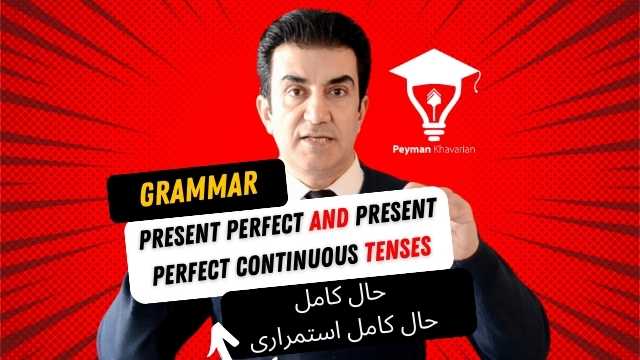Present Perfect Present perfect continuous حال کامل و حال کامل استمراری

Understanding the Present Perfect and Present Perfect Continuous Tenses
The English language is rich with tenses that describe various times and aspects of actions. Among these, the Present Perfect and Present Perfect Continuous tenses are particularly interesting because they bridge the gap between past and present.
Present Perfect Tense
The Present Perfect tense is formed using the auxiliary verb ‘have’ or ‘has’ followed by the past participle of the main verb. This tense is used to describe actions that have been completed at some unspecified time in the past but are connected to the present in some way. It often indicates that the action has some relevance to the current situation.
For example:
- I have traveled to Iran.
- She has written three books.
These sentences suggest that the actions of traveling and writing were completed at some point in the past, but the exact time is not mentioned because it’s not important. What’s important is the fact that these actions have been completed.
Present Perfect Continuous Tense
The Present Perfect Continuous tense is formed using ‘have’ or ‘has’, followed by ‘been’ and the present participle (the -ing form) of the main verb. This tense emphasizes the duration of an action that began in the past and continues into the present, or was recently finished.
For example:
- I have been studying English for two years.
- They have been building the house since January.
These sentences focus on the ongoing nature or the duration of the activities. They tell us that the speaker has been engaged in the activity of studying English over a period that extends up to now, and the building of the house started in the past and is still in progress or was just completed.
Key Differences
The main difference between the two tenses lies in their focus. The Present Perfect tense focuses on the completion of an action and its relevance to the present moment, while the Present Perfect Continuous tense emphasizes the ongoing process or duration of the action.
Usage Tips
- Use the Present Perfect to talk about experiences, changes, and completed actions with present relevance.
- Use the Present Perfect Continuous to emphasize the duration of an ongoing action or to express an action that has recently stopped but has a visible result or effect.
In conclusion, the Present Perfect and Present Perfect Continuous tenses are essential tools in English grammar that allow speakers to express a wide range of time-related concepts. Understanding their differences and uses can greatly enhance one’s ability to communicate effectively in English.
حال کامل (Present Perfect): این زمان برای بیان عملی که در گذشته شروع شده و تأثیر آن تا زمان حال ادامه دارد یا عملی که تازه تمام شده و هنوز اثر آن باقی است، استفاده میشود. ساختار آن به این صورت است:
مثال: I have finished my homework. (من تکالیفم را تمام کردهام.)
حال کامل استمراری (Present Perfect Continuous): این زمان برای بیان عملی که در گذشته شروع شده و همچنان تا زمان حال ادامه دارد و احتمال دارد که در آینده نیز ادامه یابد، به کار میرود. ساختار آن به این شکل است:
مثال: I have been reading this book for two hours. (من دو ساعت است که این کتاب را میخوانم.)







دیدگاهتان را بنویسید